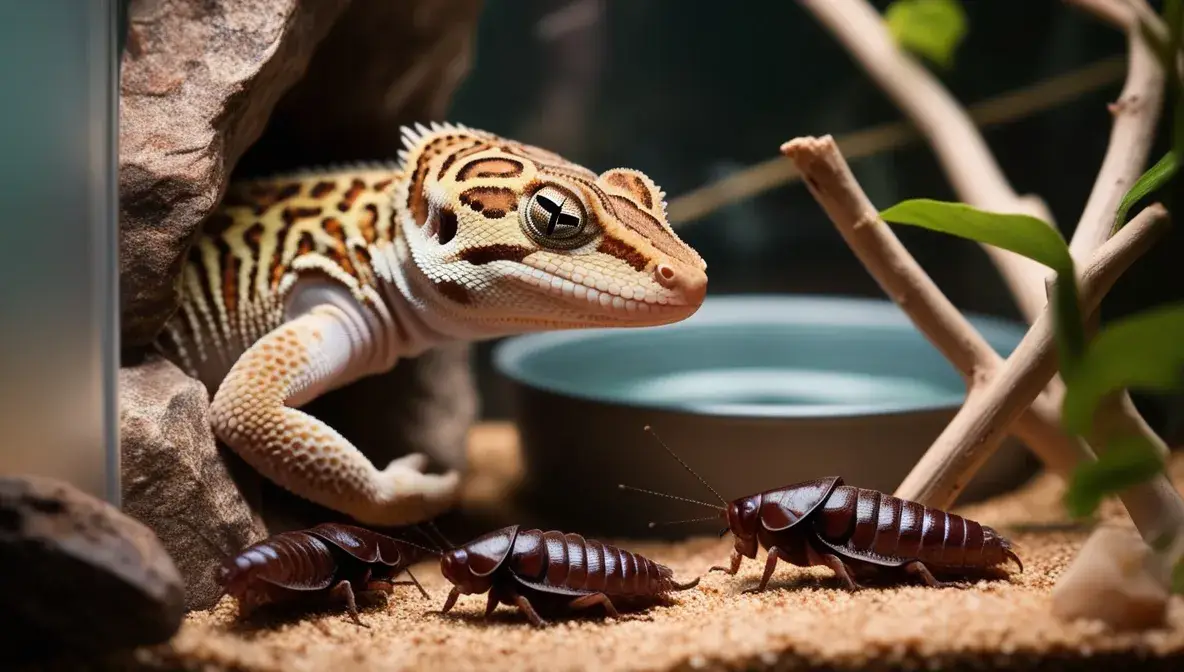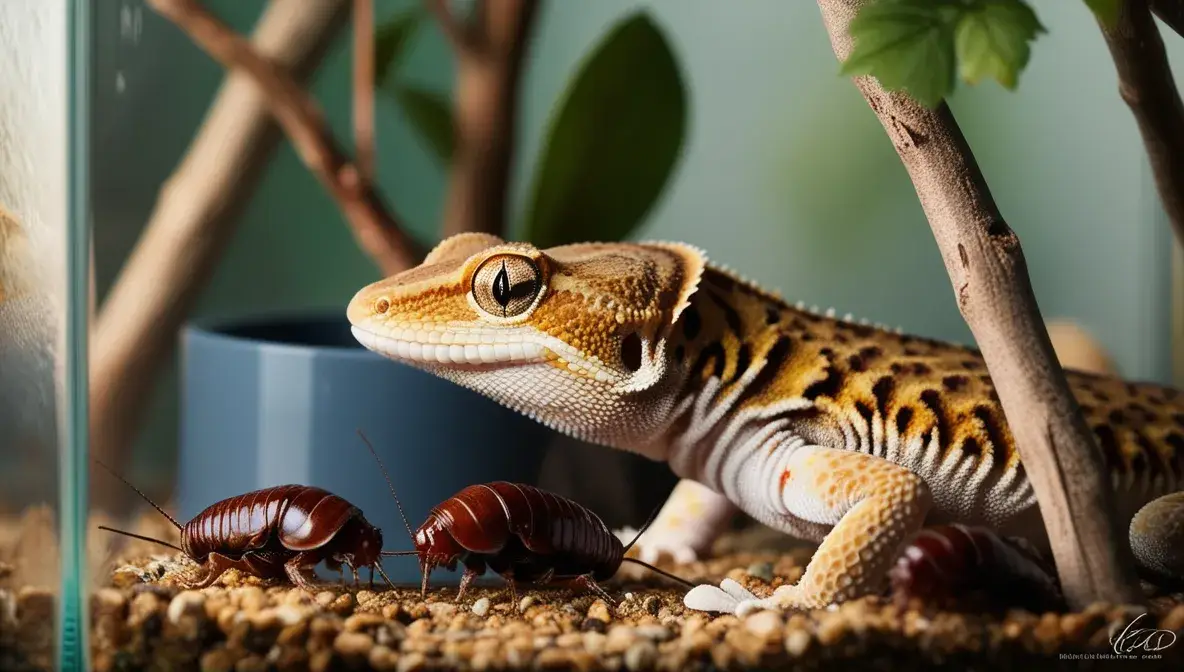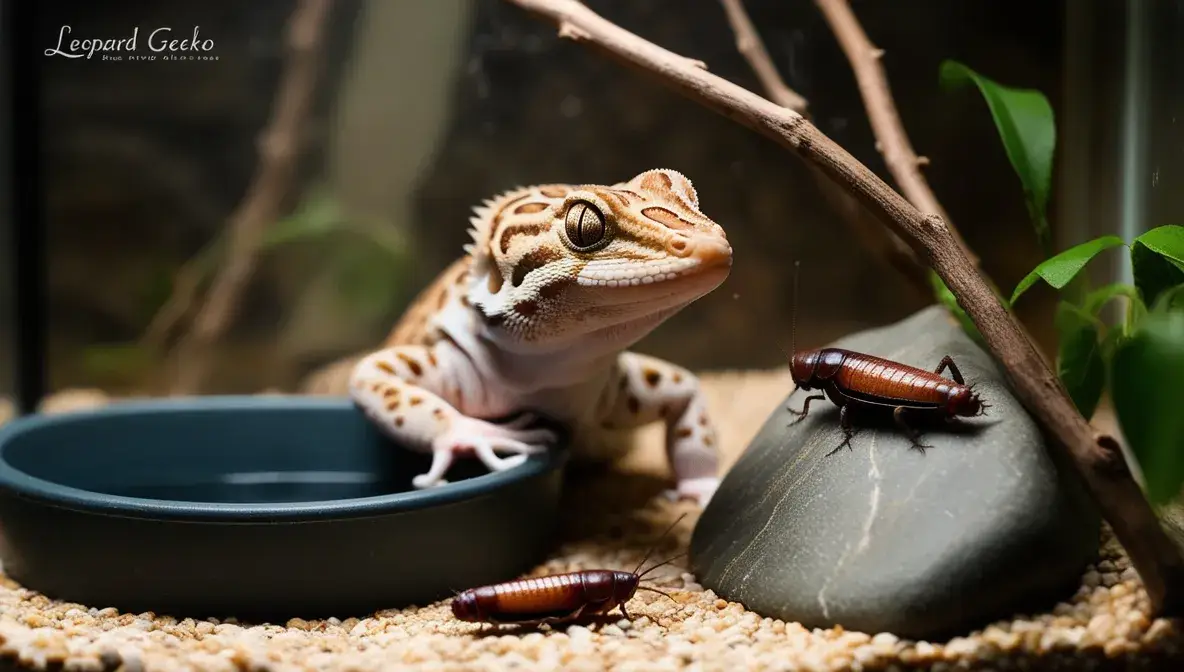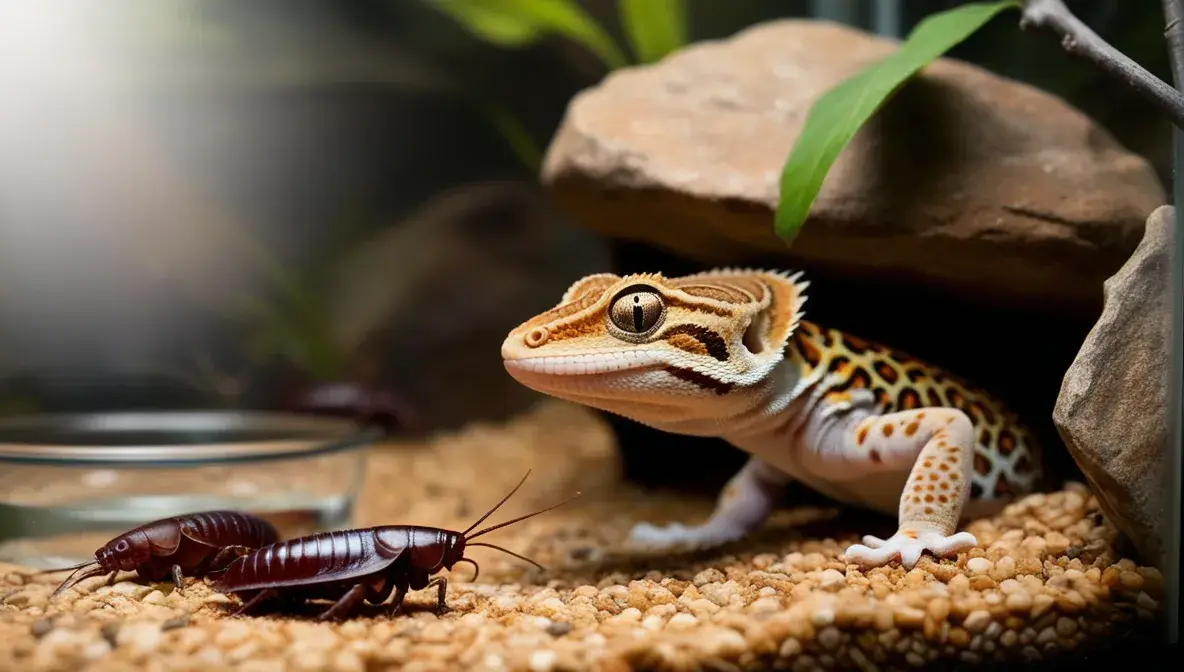When caring for a leopard gecko, one of the most common questions reptile owners ask is: “Can you leave Dubia roaches in the tank for your gecko to eat later?” This is an important topic because feeding practices significantly impact the health, safety, and comfort of your leopard gecko. Dubia roaches are a popular feeder insect for leopard geckos, thanks to their high nutritional value and ease of care. However, understanding whether it’s safe to leave them in the enclosure requires careful consideration.
In this post, we’ll explore everything you need to know about this practice—its potential risks, benefits, and the best way to handle Dubia roaches in your gecko’s habitat. By the end of this guide, you’ll have the knowledge to make informed decisions for your pet’s well-being.
What Are Dubia Roaches, and Why Are They a Popular Choice?
Dubia roaches (Blaptica dubia) are tropical cockroaches commonly used as feeders for reptiles like leopard geckos, bearded dragons, and other insectivorous pets. Unlike crickets, they are quieter, less odorous, and more nutritious, making them a favorite among reptile enthusiasts.
Key Benefits of Dubia Roaches for Leopard Geckos

- Nutritional Value: Dubia roaches are rich in protein, low in fat, and contain essential nutrients like calcium and phosphorus, making them an ideal food source for geckos.
- Ease of Handling: They don’t jump or fly, making them easy to manage for both pet owners and reptiles.
- Long Lifespan: Dubia roaches live longer than crickets and don’t die off as quickly, reducing waste.
These advantages make Dubia roaches an excellent choice for feeding leopard geckos. However, leaving them in the tank raises some concerns that need to be addressed.
Can You Safely Leave Dubia Roaches in a Leopard Gecko Tank?

The short answer is: it depends. While Dubia roaches are less aggressive and less likely to harm your gecko compared to other feeder insects like crickets, there are still risks and considerations to keep in mind. Let’s break it down.
Risks of Leaving Dubia Roaches in the Tank
Stress to Your Leopard Gecko
Leopard geckos are crepuscular reptiles, meaning they are most active during dusk and dawn. If Dubia roaches are left in the tank, they may move around during the day or night when your gecko is resting. This can cause unnecessary stress, especially if the roaches crawl onto the gecko.
Uncontrolled Breeding
Dubia roaches thrive in warm and humid conditions, which can also be found in a leopard gecko’s tank. If you leave them for too long, there’s a possibility they might start breeding, leading to an infestation in the enclosure.
Hiding and Escaping
Dubia roaches are excellent at hiding in crevices. They can wedge themselves under substrate, decorations, or even inside hides, making them difficult for your gecko to find and eat. This could result in uneaten roaches remaining in the tank indefinitely.
Tank Hygiene Issues
If Dubia roaches are left uneaten for an extended period, they may defecate in the tank, contributing to bacteria and mold growth. This can compromise the cleanliness and health of your gecko’s environment.
When Is It Okay to Leave Dubia Roaches in the Tank?
While there are risks, there are situations where leaving Dubia roaches in the tank may be acceptable:
- Supervised Feeding: If you can monitor your gecko’s behavior, leaving the roaches in the tank for a short period (e.g., 15–30 minutes) is usually safe.
- Small Quantities: Leaving only 1–2 roaches reduces the chances of them hiding or causing stress to your gecko.
- Proper Enclosure Setup: Ensure the tank has minimal hiding spots where roaches can burrow or escape.
Best Practices for Feeding Dubia Roaches to Leopard Geckos

If you want to avoid the risks of leaving Dubia roaches in the tank, here are some actionable tips to manage feeding time effectively:
Feed in Small, Manageable Quantities
Only introduce as many Dubia roaches as your leopard gecko can eat in one sitting. Most geckos will eat 2–5 roaches per meal, depending on their size and age.
Use a Feeding Dish
Place the roaches in a smooth-sided dish that they can’t climb out of. This keeps them contained and makes it easier for your gecko to catch them.
Remove Uneaten Roaches
After 20–30 minutes, remove any uneaten roaches from the tank to prevent stress or hygiene issues.
Gut-Load the Roaches
Before feeding, gut-load the roaches with nutrient-rich foods like vegetables or commercial gut-loading products. This ensures your gecko receives maximum nutrition from its meal.
Dust with Supplements
Dust the roaches with calcium or multivitamin powder to support your gecko’s overall health.
Frequently Asked Questions About Dubia Roaches and Leopard Geckos
Can Dubia roaches harm my leopard gecko?
Dubia roaches are generally non-aggressive and unlikely to harm your gecko. However, if left for too long, they can cause stress or contribute to tank hygiene issues.
How often should I feed Dubia roaches to my gecko?
Adult leopard geckos typically eat every other day, while juveniles may eat daily. Adjust the number of roaches based on your gecko’s appetite and size.
What happens if a roach escapes in my house?
Dubia roaches are unlikely to infest your home because they require specific conditions to breed. However, it’s best to handle them carefully to prevent escapes.
Key Takeaways
Leaving Dubia roaches in a leopard gecko tank is not always the best practice due to potential risks like stress, hygiene issues, and hiding. While short-term supervised feeding is safe, it’s best to remove uneaten roaches after 20–30 minutes to maintain a clean and stress-free environment for your gecko.
By following best practices—such as feeding in small quantities, using a dish, and gut-loading the roaches—you can ensure your gecko receives optimal nutrition without unnecessary risks.
Conclusion
Feeding your leopard gecko is one of the most rewarding aspects of reptile care, and Dubia roaches are an excellent choice for their nutritional benefits. However, it’s crucial to consider the risks of leaving roaches in the tank and take steps to keep your gecko’s environment clean and comfortable.
Have you tried feeding Dubia roaches to your leopard gecko? Share your experiences or questions in the comments below—we’d love to hear from you!, Explore our other post about Dubia roaches Drguidez.
By making informed decisions about feeding practices, you’ll ensure your leopard gecko thrives in a healthy and stress-free habitat.

Mark Manson is an expert blogger specializing in Dubia Roaches. He shares practical care tips, breeding insights, and feeding advice to help enthusiasts and reptile owners thrive.

